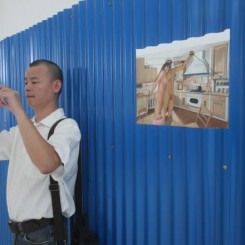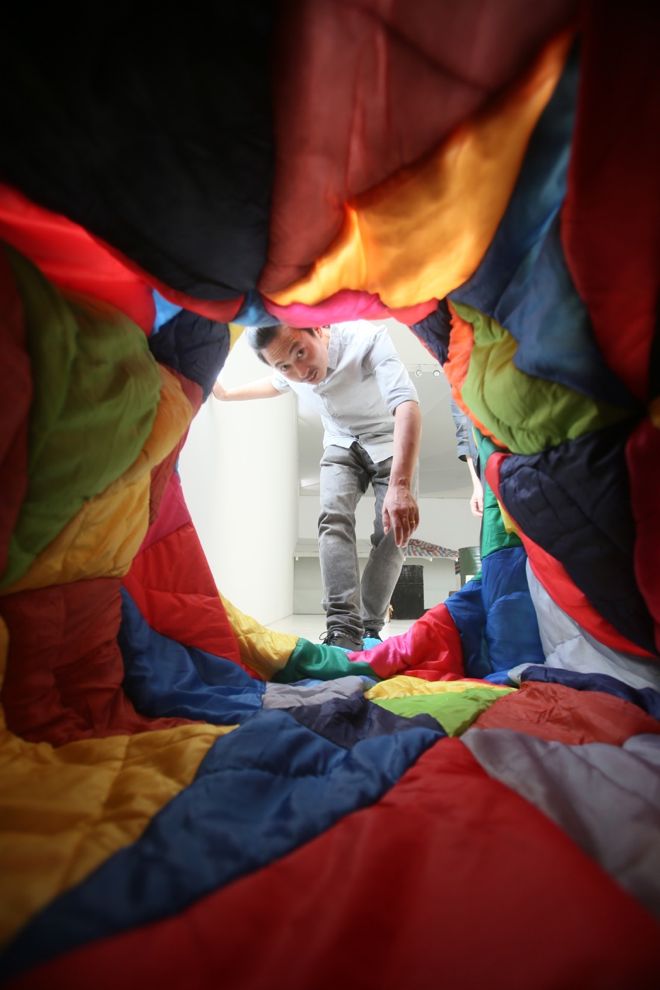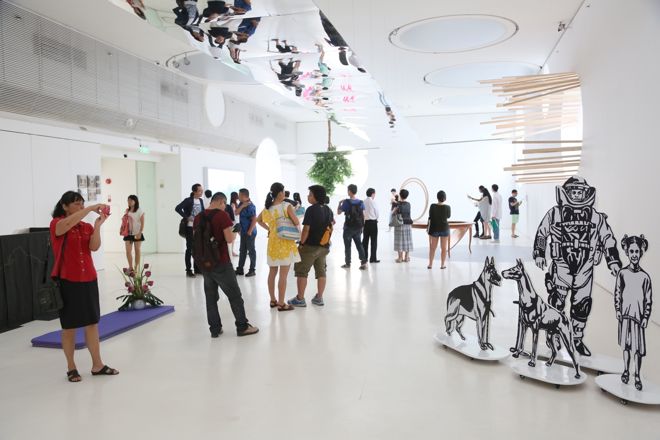Times Heterotopia Trilogy #2: You Can Only Think about Something if You Think of Something Else
Times Museum (Times Rose Garden, Huang Bian Bei Lu, Bai Yun Da Dao, Guangzhou.), 2014.8.23-2014.10.26
We were almost finished with our soup when the woman next to me, an employee at the Mexican consulate in Guangzhou, pulled a pale orange scorpion out of her bowl. You can eat it, she was told, but leave the poisonous tail barb alone. That scorpion was just a little guy, though, hardly a face-hugger, and the tail didn’t look like it had much sting left in it at all. Neither did the artworks we’d just seen at the Times Museum’s latest offering, “You Can Only Think about Something if You Think of Something Else”.
The exhibition, curated by Nikita Yingqian Cai, isn’t really meant to be provocative so much as progressive, at least in its curation. The show aims to engage artists with the surrounding community, one of the founding motivations of the museum, which is built atop an apartment complex in a northern suburb of Guangzhou.
Earlier, at the opening, Hu Yun had introduced to me his piece, “Mind Breaths”, which seems more representative of “bourgeois tendencies” in Shanghai, where he lives, than anywhere in suburban Guangzhou. Hu sat beside me while I drank a sarsaparilla flavored “Asia” soda and explained how he had become really enthusiastic about yoga. He had auditioned several teachers in Guangzhou before choosing one to lead a series of yoga workshops as his contribution to the exhibition.
Li Liao likewise presented a work derived from one of his enthusiasms. He hired five people to play the online game League of Legends for a month, adding his own rule that forbade the players, as one team, from advancing beyond a river to attack the enemy. The best they could do is to endure the enemy’s attacks, never fully defeat them. In the context of Li’s other work, the performance, entitled “Deadlock”, seems suggestive of the futility of low-wage labor, but he disavowed that interpretation, and any interpretation, really. “I talk less about my ideas,” he said, “It seems unnecessary.”
While Hu and Li’s works took the form of pleasurable pastimes, Yu Ji seemed disappointed that kids were playing on her work. “Can the Ocean Horizon [Rise] Higher Than a Mountain” is an uneven, unstable installation that spans the width of the exhibition space, forcing people to walk over it to access the works beyond. She said she wanted the loose hexagonal tiles to shift more, creating danger and uncertainty. She talked about the work’s relationship to her sculpture, and I asked her if it could be considered a sculpture generator, a way of creating different human forms by forcing people to change their postures as they made their way across the unusual terrain. “That’s a bit too deep,” she laughed.
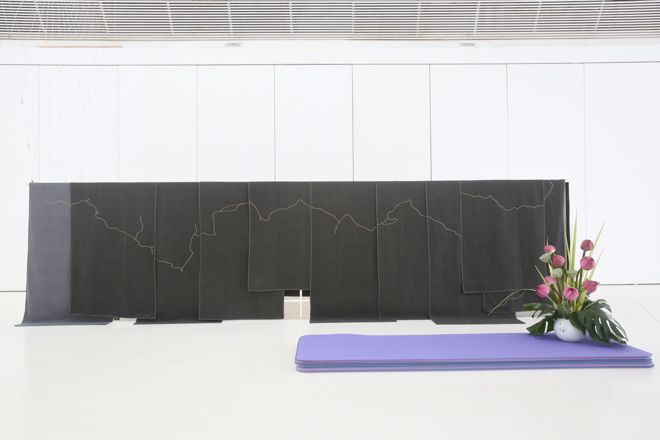
Hu Yun, “Mind Breaths”, dimensions variable, installation and performance, 2014
胡昀,《心灵呼吸》,综合媒介装置和行为,尺寸可变,2014
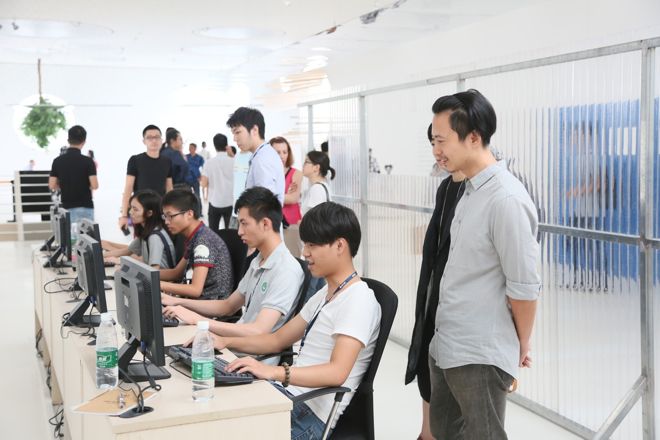
Li Liao, “Deadlock”, installation and performance, dimensions variable, 2014
李燎,《僵局》,综合媒介装置和行为,尺寸可变,2014
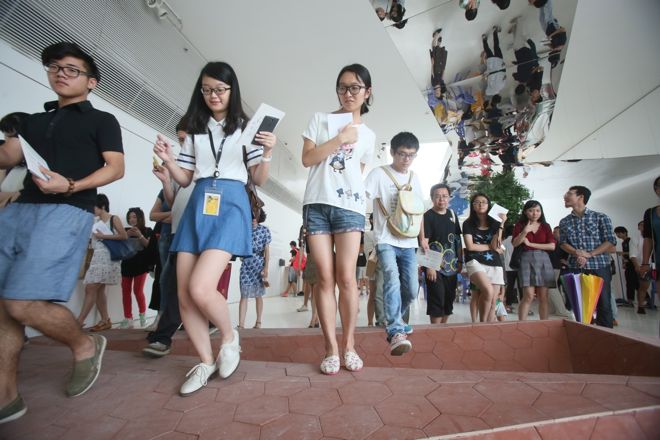
Yu Ji, “Can the Ocean Horizon [Rise] Higher Than a Mountain”, mixed media, dimensions variable, 2014
于吉,《海洋能够高过山顶么?》,综合媒介,尺寸可变,2014
The exhibition catalogue for the show at the Times Museum opens with a quote from Michel Foucault taken from Of Other Spaces: Utopia and Heterotopias: “We are in the epoch of simultaneity: we are in the epoch of juxtaposition, the epoch of the near and far, of the side-by-side, of the dispersed.” Side-by-side but dispersed seems a good description of young Chinese artists’ practices. It is up to others—critics, say, or viewers, curators, art historians—to make connections, to identify themes in artists’ practices, but it is worth noting how little their preoccupations, at least in this small sample, are in dialogue with each other.
That there are no broad, wide-ranging movements aiming at some kind of social or artistic progress is partly attributable to a postmodern suspicion of progress, as well as the political untenability of appearing to have an agenda in a country piloted so jealously by its leaders. If there’s any sting in these young artists’ tails it’s in their widening dispersion, their pursuit of divergent interests, part of the implicit compact between state and citizens to do anything they want except for playing politics.
